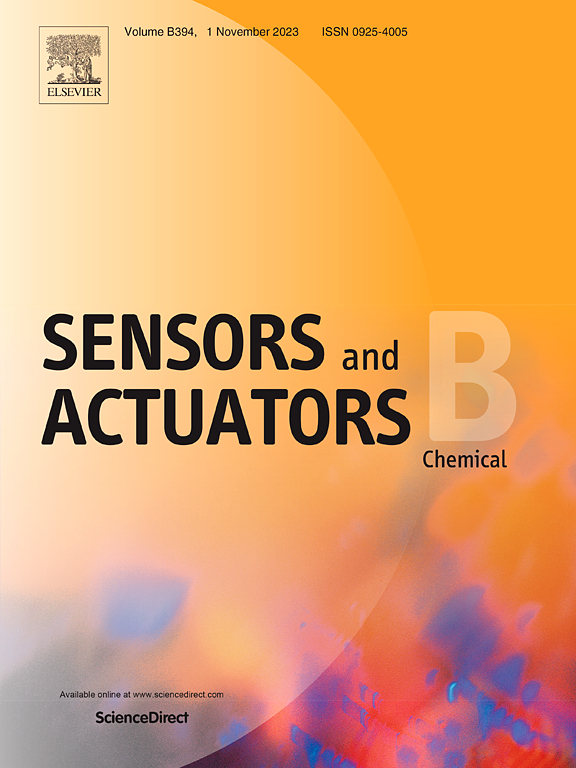Ultrasensitive probe-type hydrogen sensor based on dual liquid-filled silica capillary fibers with Pt-WO3 coating
IF 8
1区 化学
Q1 CHEMISTRY, ANALYTICAL
引用次数: 0
Abstract
A highly sensitive optical fiber hydrogen sensor is proposed and experimentally verified. It consists of dual liquid-filled silica capillary fibers (SCFs) with Pt-WO3 coating. The cedar oil filled in SCFs can be considered liquid-core of theirs, and light is confined and transmitted within it. The SCFs with different inner diameter form a structure like a liquid-in-glass thermometer, resulting in the thermal expansion effect of the sealed cedar oil is significantly amplified, which ensures the proposed sensor highly sensitive to hydrogen since it operates on the exothermic reaction between WO3 and hydrogen. Due to the long interference length, the reflection spectrum of the sensor exhibits highly dense fringes in wavelength domain, then optical path difference demodulation is adopted. The experimental results reveal that the hydrogen sensor has an ultrahigh OPD sensitivity of 560.583 µm/% (vol%), corresponding to an equivalent sensitivity of 109.597 nm/% (vol%) in wavelength domain, which is 1–2 orders of magnitude higher than most optical fiber hydrogen sensors. Additionally, the proposed sensor features with compact size (less than 4 mm in total length), good repeatability, fast response speed and humidity immunity for hydrogen sensing.
求助全文
约1分钟内获得全文
求助全文
来源期刊

Sensors and Actuators B: Chemical
工程技术-电化学
CiteScore
14.60
自引率
11.90%
发文量
1776
审稿时长
3.2 months
期刊介绍:
Sensors & Actuators, B: Chemical is an international journal focused on the research and development of chemical transducers. It covers chemical sensors and biosensors, chemical actuators, and analytical microsystems. The journal is interdisciplinary, aiming to publish original works showcasing substantial advancements beyond the current state of the art in these fields, with practical applicability to solving meaningful analytical problems. Review articles are accepted by invitation from an Editor of the journal.
 求助内容:
求助内容: 应助结果提醒方式:
应助结果提醒方式:


